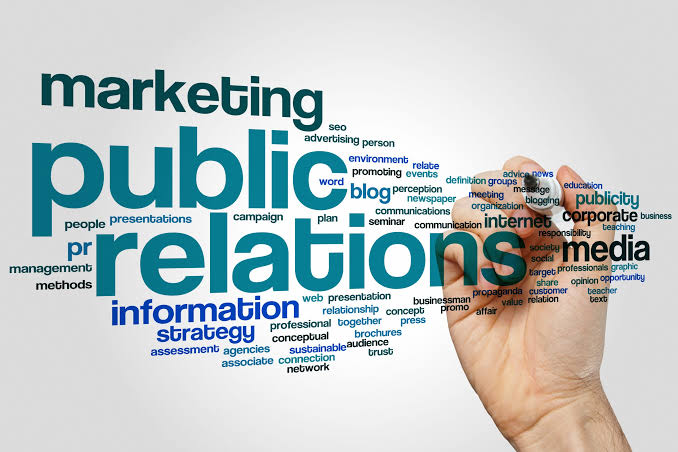The public relations (PR) landscape, like every industry, is today undergoing rapid transformation. This transformation is driven by technological advancements, changing consumer behaviours, and the relentless pace of digital media. The PR practitioner must evolve with the changing landscape so as not to be left behind. Indeed, in this era of disruption, PR professionals must not only adapt but also thrive by embracing new strategies, tools, and mindsets.
Disruption in PR refers to significant changes that challenge traditional methods and demand innovative approaches. These disruptions can stem from various sources, including social media platforms, artificial intelligence (AI), big data, and evolving consumer expectations. To thrive in this environment, PR professionals must first understand the nature of these disruptions and their implications.
Embracing Digital Transformation
Digital transformation is at the heart of PR disruption. The rise of social media has fundamentally altered how brands communicate with their audiences. Platforms like Twitter, Instagram, and TikTok provide real-time interaction and unprecedented reach. To leverage these platforms effectively, PR professionals must:
Stay Informed: Keep up with the latest trends and algorithm changes on social media platforms. Understanding how these platforms work and what content performs well is crucial.
Create Engaging Content: Develop content that resonates with your target audience. This includes using multimedia elements like videos, infographics, and live streams to capture attention.
Monitor and Engage: Use social listening tools to monitor brand mentions and sentiment. Engage with your audience promptly to build relationships and address concerns.
GTBank has effectively leveraged digital platforms to engage with its audience. The bank’s social media campaigns, such as the “GTBank Food and Drink Festival,” use engaging content and live updates to interact with followers, demonstrating the power of digital transformation in enhancing brand visibility and customer engagement.
Leveraging AI and Big Data
Artificial intelligence and big data are revolutionizing PR by providing valuable insights and automating repetitive tasks. PR professionals can leverage these technologies to enhance their strategies:
Data-Driven Decisions: Use data analytics to understand audience behaviour, preferences, and trends. This information can guide content creation, campaign planning, and crisis management.
AI-Powered Tools: Implement AI-powered tools for media monitoring, sentiment analysis, and chatbots. These tools can streamline processes, identify potential issues, and enhance customer interactions.
Personalization: Utilize data to deliver personalized content and experiences to your audience. Personalization increases engagement and builds stronger connections.
Interswitch, a leading digital payment company in Nigeria, uses data analytics to understand customer behaviour and improve service delivery. By leveraging big data, Interswitch can tailor its communications and marketing efforts to meet the specific needs of its diverse customer base.
Navigating the Challenges of Misinformation
The spread of misinformation and fake news is a today significant challenge for PR professionals. In a digital world where information can go viral within minutes, maintaining credibility is paramount:
Fact-Checking: Establish rigorous fact-checking protocols to ensure the accuracy of information before dissemination. Collaborate with reputable sources to verify claims.
Transparent Communication: Be transparent with your audience about your processes and sources. Transparency builds trust and helps counteract misinformation.
Proactive Crisis Management: Develop a robust crisis management plan that includes strategies for addressing misinformation. Respond swiftly and accurately to mitigate reputational damage.
During the #EndSARS protests, several Nigerian brands, such as Flutterwave and PiggyVest, faced challenges with misinformation. By maintaining transparency and actively engaging with their audiences on social media, these companies were able to uphold their credibility and support the movement responsibly.
Building Authentic Relationships
In an era of disruption, authenticity is key to building lasting relationships with stakeholders. Audiences are more discerning and value genuine interactions:
Storytelling: Craft compelling narratives that align with your brand’s values and mission. Authentic storytelling resonates with audiences and fosters emotional connections.
Influencer Collaboration: Partner with influencers who genuinely align with your brand. Authentic endorsements from trusted voices can significantly impact your reputation.
Community Engagement: Actively engage with your community through social media, events, and other channels. Show that you value their input and are committed to their needs.
MTN Nigeria has successfully built authentic relationships through community engagement and storytelling. Their “What Can We Do Together” initiative encourages communities to propose projects for MTN Foundation funding, showcasing the company’s commitment to social responsibility and fostering trust and loyalty among Nigerians.
Andela, a company that trains software developers in Africa and connects them with global companies, also uses storytelling and influencer collaboration to build its brand. By sharing the success stories of its developers and partnering with industry influencers, Andela has established itself as a leader in tech talent development.
Disruption in the PR industry is inevitable. It, however, also presents immense opportunities for growth and innovation. By embracing digital transformation, leveraging AI and big data, navigating misinformation challenges, and building authentic relationships, PR professionals can go beyond survival and begin to thrive in this dynamic landscape.
The key lies in staying adaptable, informed, and proactive in adopting new strategies and technologies. As the PR industry continues to evolve, those who embrace disruption will lead the way in shaping the future of communication.





